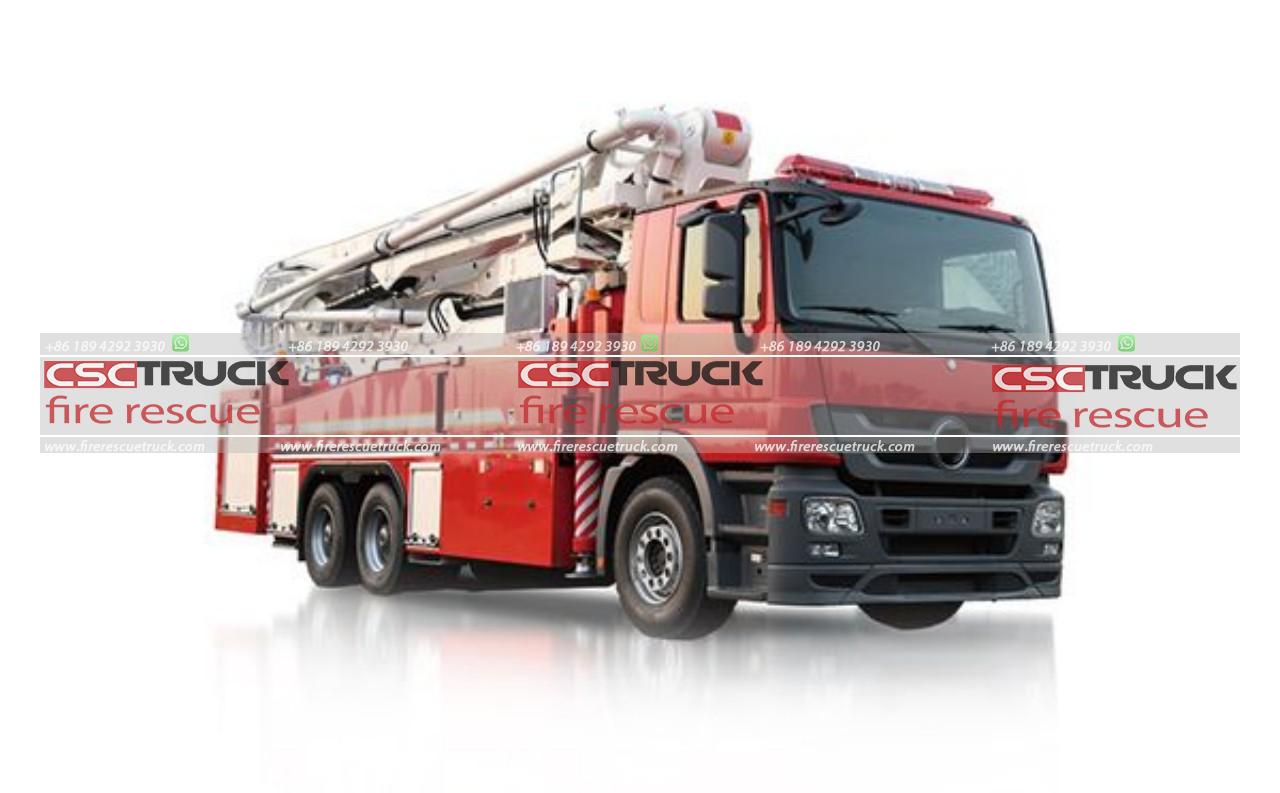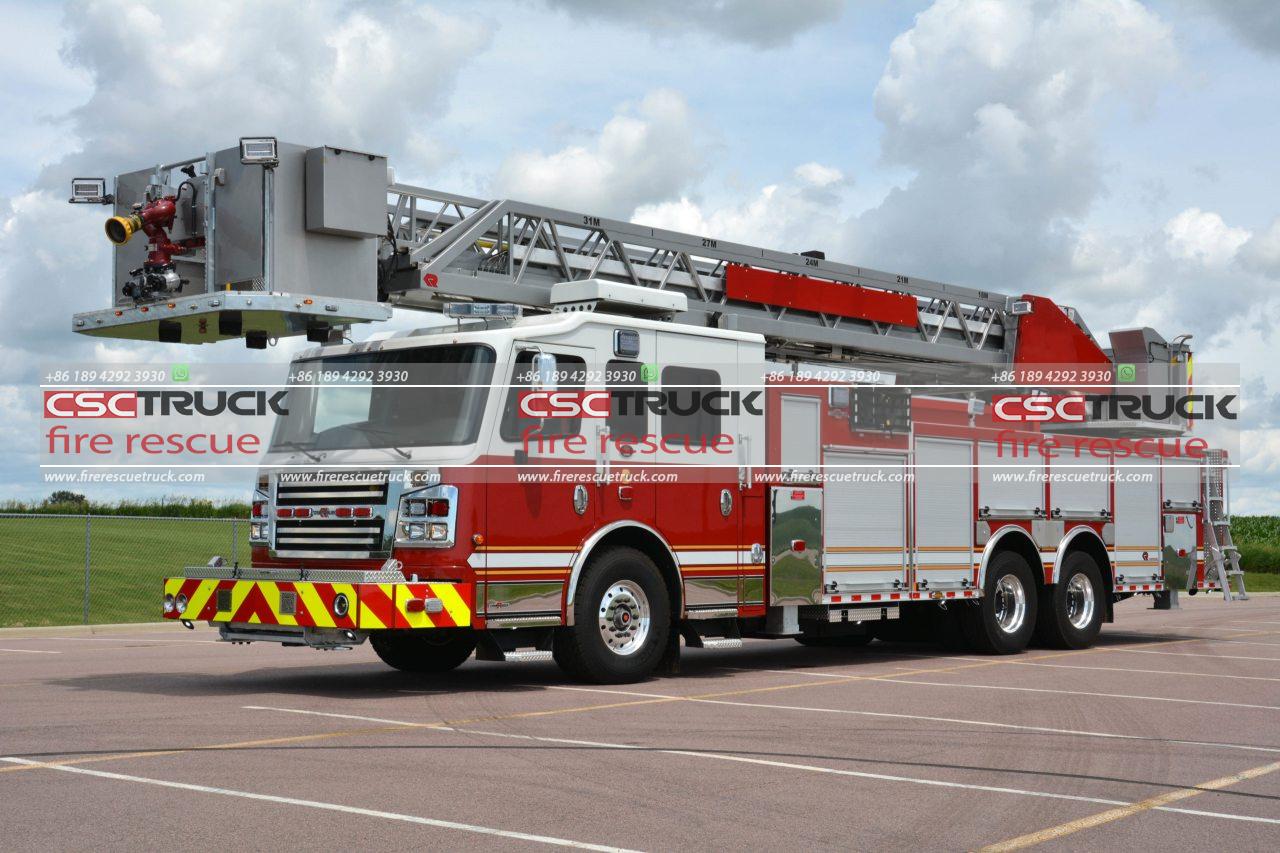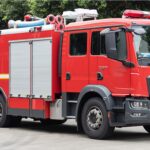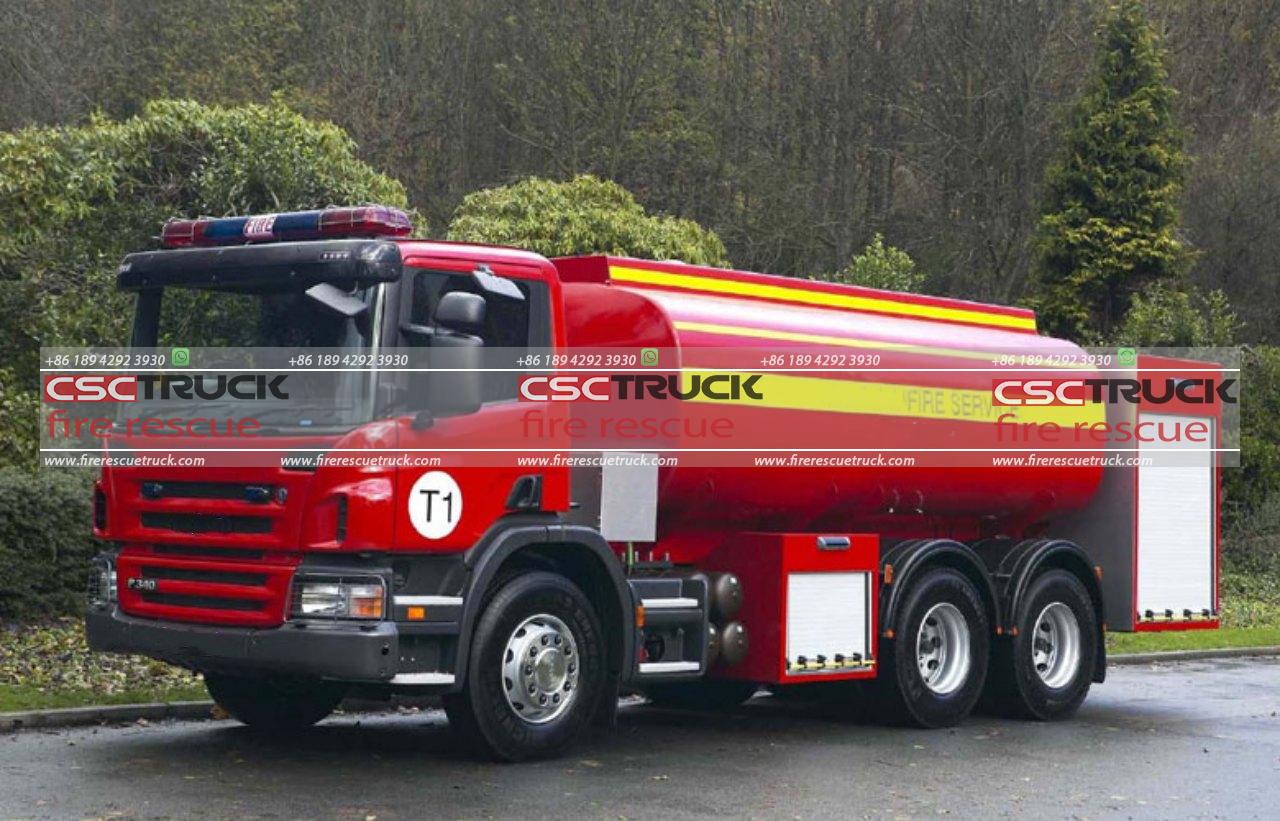When it comes to battling towering infernos, firefighters require specialized equipment to effectively combat the blaze and protect lives and property. One such piece of equipment that plays a crucial role in firefighting operations is the water tower fire truck. These impressive vehicles are designed to provide elevated water delivery, enabling firefighters to tackle fires from above and gain a tactical advantage. In this article, we will delve into the inner workings of a water tower fire truck and explore how it facilitates firefighting efforts.
A water tower fire truck, also known as an aerial ladder truck, is a firefighting apparatus equipped with a tall, extendable ladder and a large water tank. The defining feature of this vehicle is its hydraulic ladder, which can be extended to significant heights, allowing firefighters to access the upper floors and rooftops of tall buildings. This elevated position not only enhances the safety of the firefighters but also provides them with a strategic advantage in extinguishing fires from above.
The ladder on a water tower fire truck is usually made of sturdy materials such as steel or aluminum and is capable of extending to heights ranging from 75 to over 100 feet, depending on the specific model. The extension mechanism is powered by hydraulics, which allows for smooth and controlled movement of the ladder. The ladder can be horizontally rotated, providing firefighters with a wide range of motion and flexibility in directing the water stream precisely where it is needed.
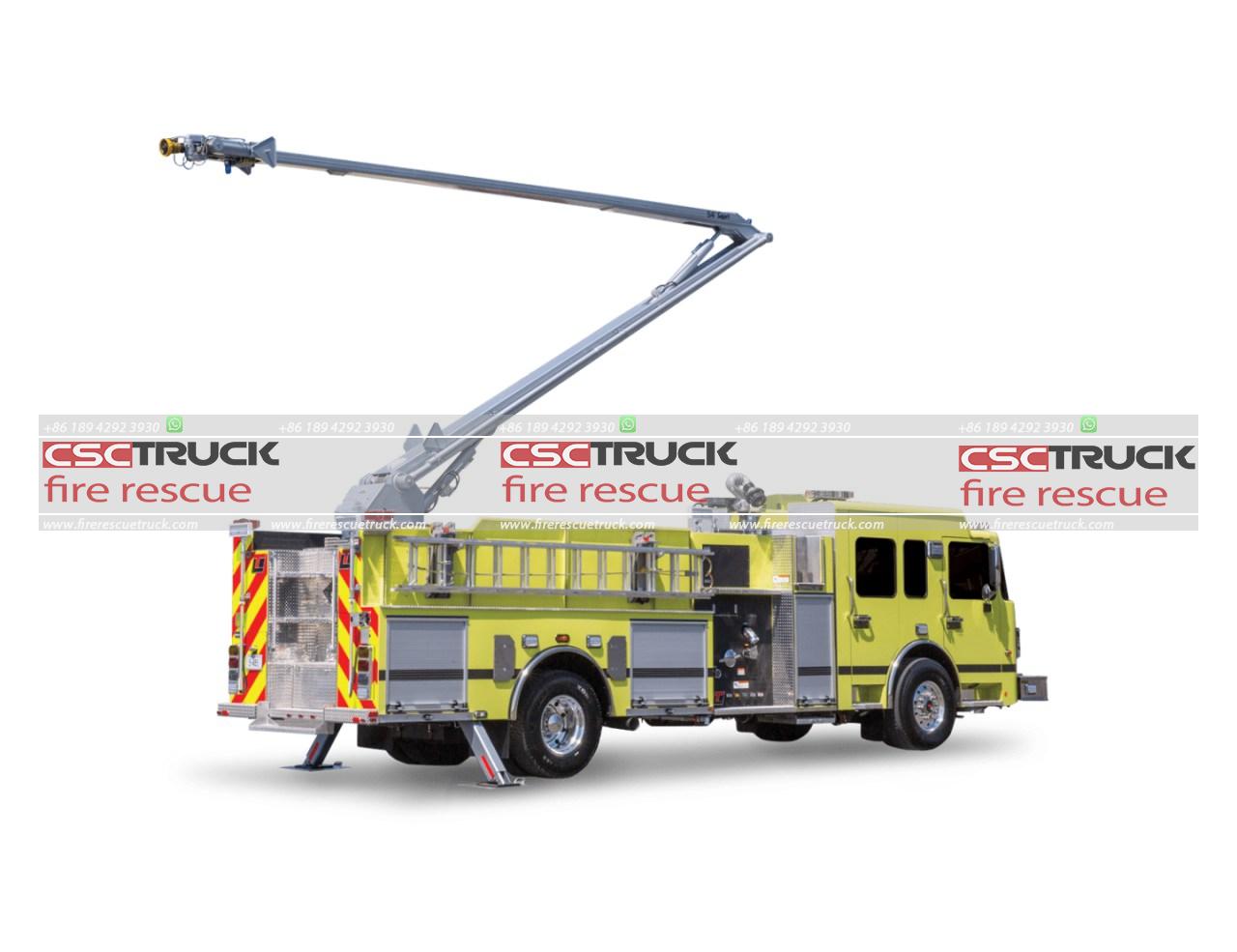
At the top of the ladder, there is a water monitor, also known as a water cannon or water turret. This device is responsible for delivering large volumes of water at high pressures. Water monitors can vary in size and capacity, but they are typically designed to discharge hundreds or even thousands of gallons of water per minute. The water cannon is connected to the water tank on the fire truck via a series of hoses and pipes, ensuring a steady supply of water during firefighting operations.
The water tank on a water tower fire truck can hold a significant amount of water, usually ranging from 300 to 500 gallons, depending on the size of the vehicle. This onboard water storage is essential for immediate response and initial firefighting efforts before a continuous water supply can be established through other means, such as hydrants or water tenders. The tank is equipped with a pump that pressurizes the water and feeds it to the water cannon for discharge.
Operating a water tower fire truck requires skilled firefighters who have undergone specialized training in aerial operations. These firefighters, known as aerial operators or tiller operators, are responsible for driving and maneuvering the vehicle to the desired location. They also control the extension, rotation, and elevation of the ladder, ensuring its stability and proper positioning. In addition, they operate the water cannon, adjusting its direction, flow rate, and pattern to effectively combat the fire.
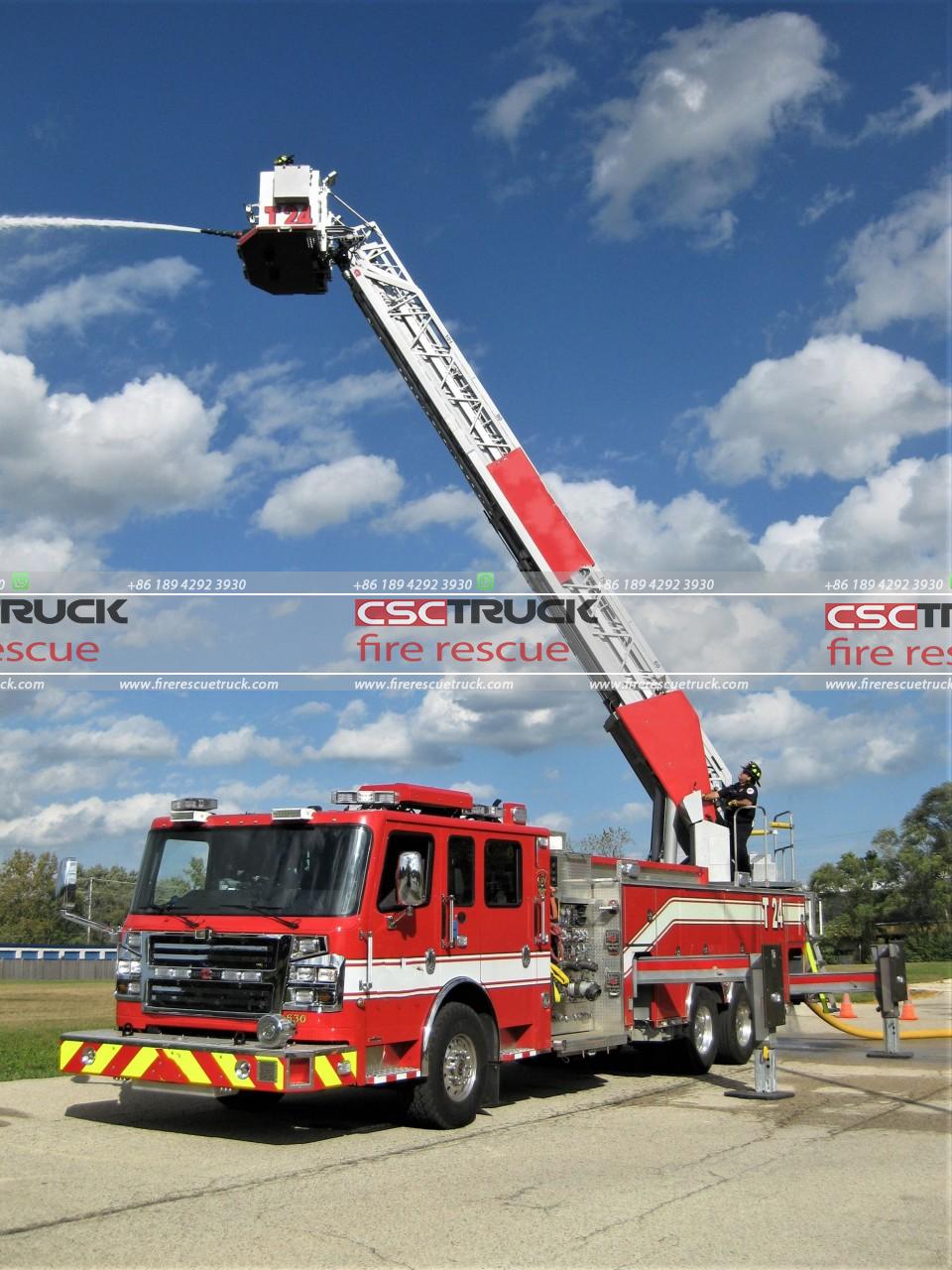
The elevated position provided by a water tower fire truck offers several advantages in firefighting operations. Firstly, it allows firefighters to reach upper floors and rooftops that may be difficult to access through other means. This is particularly crucial in tall buildings where traditional ground-based firefighting tactics may be limited in their effectiveness. By gaining access to higher vantage points, firefighters can apply water directly onto the source of the fire, rapidly suppressing it and preventing its spread.
Furthermore, the elevation provided by a water tower fire truck enhances the safety of firefighters by keeping them at a safe distance from the fire and potential hazards on the ground. Firefighters can operate from a stable platform, minimizing the risk of injury or collapse. This is especially advantageous in situations involving hazardous materials or unstable structures where direct entry may be too risky.
Another benefit of using a water tower fire truck is its ability to provide effective water delivery over long distances. The high-pressure water cannon can propel the water stream to considerable heights, allowing firefighters to reach fires that may be several stories above ground level. This long-range capability is particularly valuable in situations where direct access to the fire is limited or obstructed.
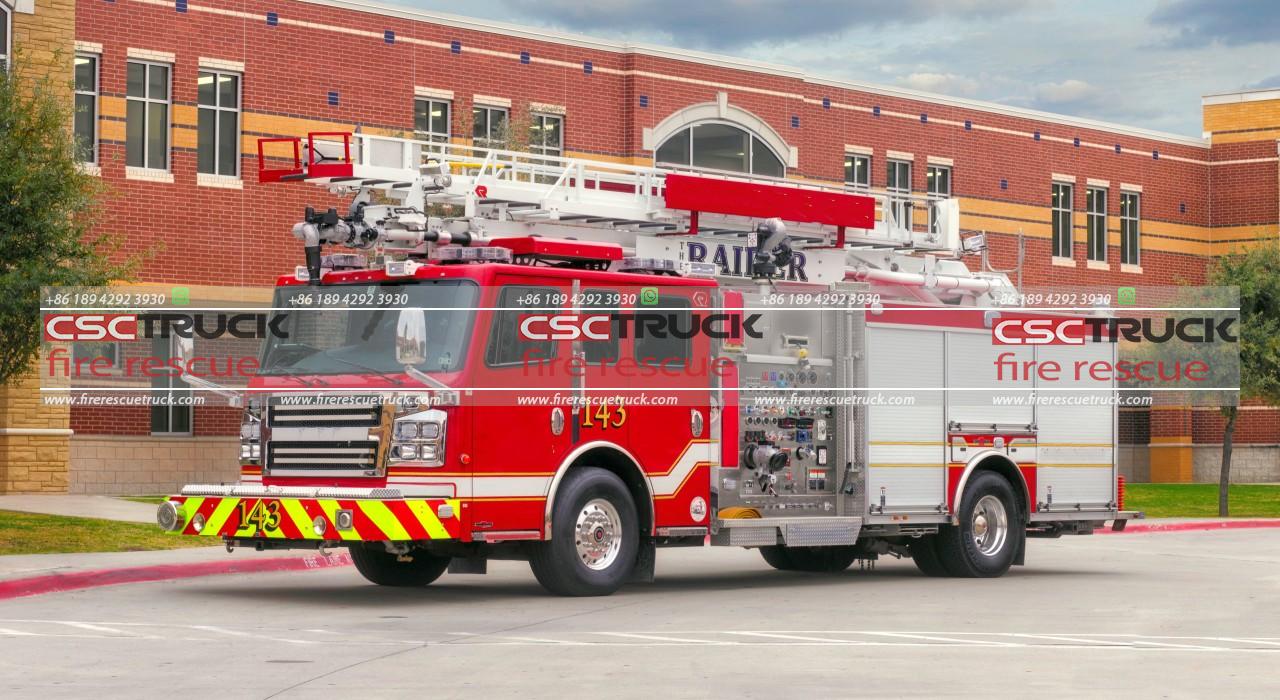
Moreover, water tower fire trucks are not only used for extinguishing fires but also serve various other purposes during emergencies. For instance, the extendable ladder can be utilized for rescue operations, enabling firefighters to reach individuals trapped in high-rise buildings or precarious locations. The ladder provides a stable and secure platform for the safe extraction of people, allowing firefighters to perform their life-saving duties with precision and efficiency.
Additionally, water tower fire trucks often come equipped with additional features and tools that further enhance their capabilities. These may include adjustable outriggers, which provide stability to the vehicle when the ladder is fully extended, ensuring the safety of both the firefighters and the surrounding area. Some models are equipped with specialized equipment, such as aerial platforms or baskets, which can be used for elevated rescue missions or to carry out inspections and maintenance tasks on tall structures.
It is important to note that the operation of a water tower fire truck requires a coordinated effort between the aerial operator and other firefighters on the ground. Communication is crucial to ensure effective teamwork and synchronization of efforts. Ground personnel work in conjunction with the aerial operator, providing information, guiding the placement of the ladder, and assisting in the overall firefighting strategy.
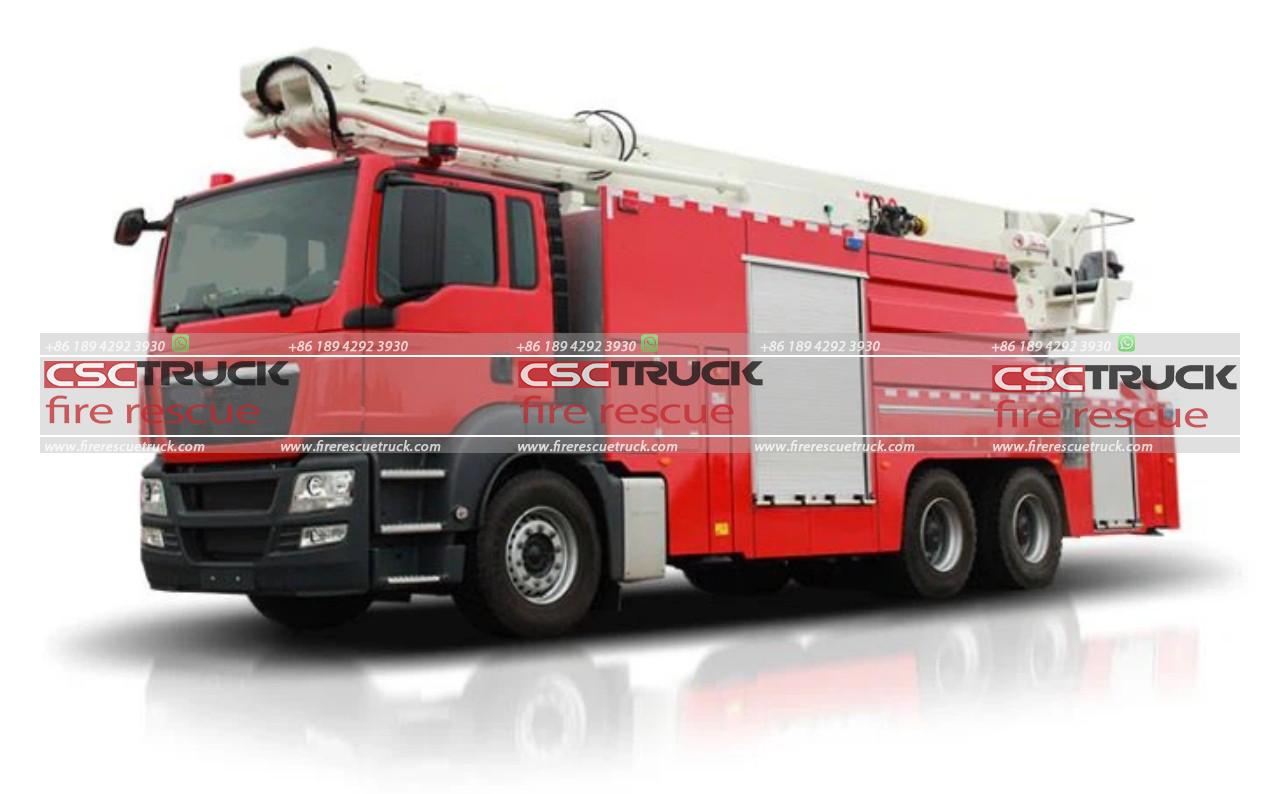
Furthermore, water tower fire trucks are designed to be versatile and adaptable to different types of firefighting scenarios. They can be used in both urban and rural environments, providing critical support in high-rise buildings, industrial complexes, and even in areas with limited access. Their mobility and flexibility allow them to navigate through narrow streets and crowded areas, reaching the heart of the fire quickly and efficiently.
As technology advances, newer models of water tower fire trucks continue to emerge, incorporating innovative features and improvements. Some vehicles now include advanced monitoring systems that provide real-time data on ladder stability, water pressure, and other crucial parameters. This enables firefighters to make informed decisions and ensures the safe and effective operation of the vehicle during firefighting operations.
In conclusion, water tower fire trucks are indispensable assets in the firefighting arsenal, providing elevated water delivery and a strategic advantage in combating fires. These vehicles combine powerful water cannons, extendable ladders, and large water tanks to effectively extinguish fires from above, protect lives, and minimize property damage. Their ability to reach higher vantage points, deliver water over long distances, and perform rescue operations makes them invaluable tools in emergencies. As technology and firefighting techniques continue to evolve, water tower fire trucks will undoubtedly remain at the forefront of the fire department’s efforts to ensure public safety and protect communities from the devastating effects of fires.
